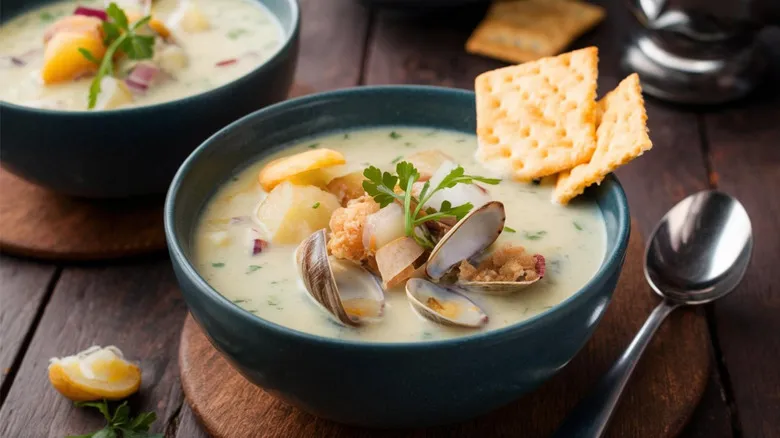Start with a flavorful base

A delicious New England clam chowder begins with robust flavors that serve as a base for the other ingredients. Start by sautéing onions to unlock their aromatic essence before introducing any seafood. Incorporating butter from the outset adds a layer of richness, which is essential for a superb chowder. Anne Quatrano emphasizes the importance of "plenty of well-sweated onions in butter to create the roux." A roux, made from a combination of fat and flour, helps thicken the chowder right from the start.
Brock Anderson enhances the flavor at this stage by using bacon fat. He suggests "rendering the fat from the bacon at the beginning and using that oil to sauté the vegetables, allowing their flavors to soften and develop." You can experiment with both techniques to discover your preferred method and even mix them up to create various versions.
As the onions begin to sweat, they release flavors that will elevate your chowder. This process also ensures that the onions become soft and mild, which is crucial for them to blend seamlessly with the other ingredients as the chowder simmers. While any type of onion can be used, yellow onions provide a slightly sweeter taste that complements the saltiness of the other components beautifully.
Add herbs and spices to clam chowder

Salt and pepper enhance the flavors of the ingredients in New England clam chowder, while herbs like bay leaves and thyme contribute additional depth. Fresh thyme features small leaves that release a woody flavor when chopped. It has a hint of mint in both taste and aroma, but is more earthy compared to true mint herbs. To incorporate it into clam chowder, finely mince the thyme and add it during the softening of the aromatics. Bay leaves are typically added whole and removed after cooking, allowing them to infuse flavor without making the dish too bitter, while maintaining a smooth texture. Fresh parsley can also be sprinkled on top as a garnish, adding a touch of brightness to the chowder.
You can opt for either fresh or dried herbs. Keep in mind that dried herbs tend to have a more potent flavor than fresh ones, so you may want to use slightly less. Start with a small quantity and adjust the seasoning as the chowder simmers. And don’t forget to include salt and pepper, as they help to elevate the natural flavors of the other ingredients and add complexity to the dish.
Use the right dairy products

The finest chowder is incredibly creamy, so be sure to incorporate dairy while preparing it, aiming for a harmonious blend of rich flavor and liquid consistency. Anne Quatrano suggests using heavy cream and milk in the recipe. While cow's milk is the classic option, you can also experiment with alternatives like goat's milk, which is an excellent choice for those allergic to cow's milk, though it will lend a slightly different taste. Nut milks can also be suitable, with almond milk being the closest substitute for cow's milk in this dish. You might need to thicken the chowder using a roux or by adding extra starches, such as mashed potatoes.
Classic clam chowder relies on heavy cream and milk, which are key ingredients that contribute to its rich flavor and velvety texture. Heavy cream contains a significantly higher fat content than milk, typically at least 36%. This is what gives chowder its luxurious thickness and indulgent taste, but it's important to use both for optimal results. Start by adding more milk than cream, as a small amount of cream can greatly enhance the richness of the dish.
Like bisque, chowder requires dairy to achieve the desired texture and flavor. However, chowder is generally thicker than bisque, thanks to the inclusion of chunkier ingredients. Both dishes feature milk and heavy cream as fundamental components.
Choose the right clams
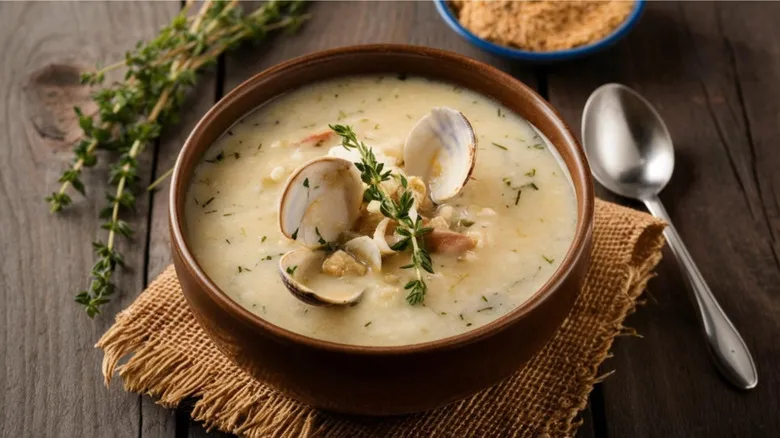
As the key ingredient in New England clam chowder, it's essential to use high-quality clams. Fresh clams are an excellent option, providing a wonderful briny flavor. Chef Anne Quatrano favors fresh littleneck clams, which she steams. These clams are perfect because they are the smallest and most tender among hard-shell varieties. Remember to save the broth from steaming the clams, as it can be used in the chowder.
Littleneck clams are a type of hard-shell clam that tends to be relatively large. You might need to chop them into smaller, bite-sized pieces for your chowder. Alternatively, you can opt for larger varieties like Quahogs or topnecks if they are more readily available. Regardless of the size you choose, ensure the pieces are small enough for easy consumption in your finished chowder. For an added touch, consider garnishing the dish with a few opened clamshells for a stylish presentation.
If you’re in a landlocked area, canned clams can also be a suitable substitute. Look for high-quality canned clams that clearly indicate their sourcing practices, ensuring you get the freshest and most flavorful clams possible.
Undercook the clams
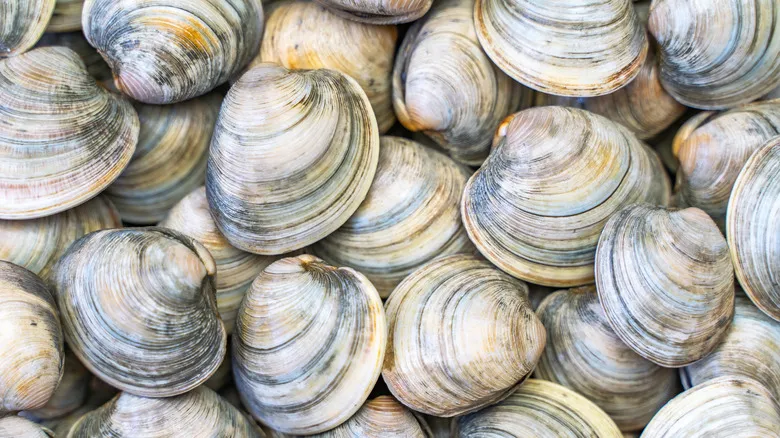
Overcooked clams turn tough and chewy, making them less appealing for a delicious chowder. To avoid this, steam the clams until they are just slightly undercooked. This technique is essential for achieving tender and sweet clams in your chowder. Like Anne Quatrano, Brock Anderson also steams his clams when preparing chowder at home, but he quickly removes them from the heat as soon as they’re ready. He advocates for this approach because "I can cook them a little underdone, so when they are added (toward the end) to the chowder, they don’t become rubbery."
Steaming clams only takes a few minutes, usually between 5 and 10, depending on their size. Keep an eye out for the shells to start opening. Once they do, take the clams out of the steamer and set them aside until the rest of your dish is ready. When you add them to the hot chowder at the end, they will continue to cook just a bit more.
Keep the clam broth
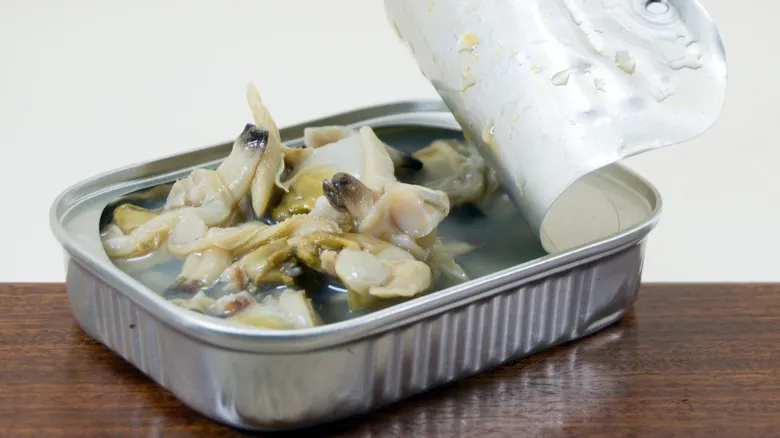
When steaming fresh clams, be sure to set aside some of the broth for your chowder. It's important to thoroughly clean the clams beforehand by soaking and scrubbing them. Additionally, strain the broth to eliminate any tiny shell fragments or sand before incorporating it into your chowder. You definitely don’t want to spoil a delicious chowder with gritty bits in every spoonful. Once those particles are mixed in, it’s nearly impossible to remove them, so take the time to strain the broth first.
Chef Anne Quatrano enhances her chowder by adding extra clam broth for added richness. You can also find clam juice in the grocery store, which can be mixed into your chowder. Start with a small quantity and taste frequently to adjust the seasonings, spices, and additional broth as needed.
If you opt for canned clams, be sure to keep the juice to mix back in, as it significantly boosts the flavor. Some chefs prefer canned clams since they are pre-cleaned and often pre-chopped, making them easy to add directly to the chowder. Whole clams can also be used, but you may need to chop them into smaller pieces before adding them to the dish. Regardless of your choice, saving the liquid from the clams is essential for enhancing the overall flavor.
Mash some potatoes for clam chowder
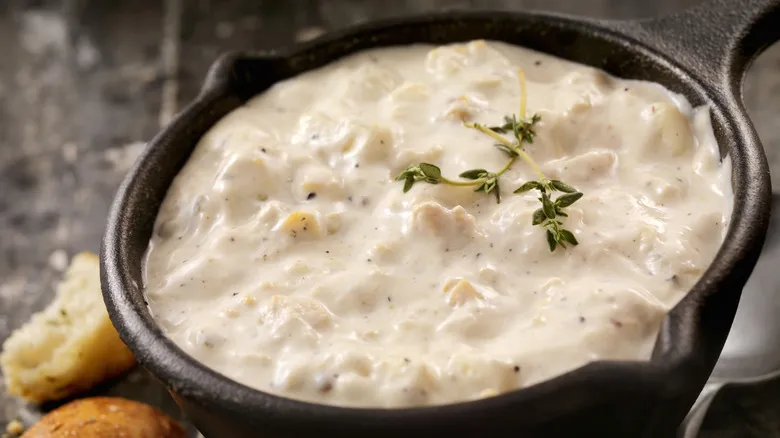
One of the most cherished aspects of chowder is its chunky, thick consistency. You can achieve this by adding ingredients like potatoes for their rustic charm. While it's important to keep some potatoes in your chowder in larger pieces, mashing a portion of them can enhance the texture. When you mix the mashed potatoes back in, you'll create a wonderfully thick chowder that you'll surely enjoy.
"A blonde roux or even some mashed potatoes can help thicken the chowder and provide a velvety texture," explains Brock Anderson. Start by cooking all the potatoes until they're tender, then assess whether the soup needs thickening. You can always remove some of the soft potatoes, mash them, and return them to the pot. An immersion blender is another option, but be cautious not to over-blend, as a good chowder should still have chunks of potatoes for that signature hearty feel.
Anne Quatrano prefers using new potatoes, which are small and sweet. While other types of potatoes can be used, they tend to create a starchier texture in the chowder. New potatoes also contribute to a creamier consistency, allowing you to potentially reduce the amount of heavy cream or milk needed.
Add pork to clam chowder
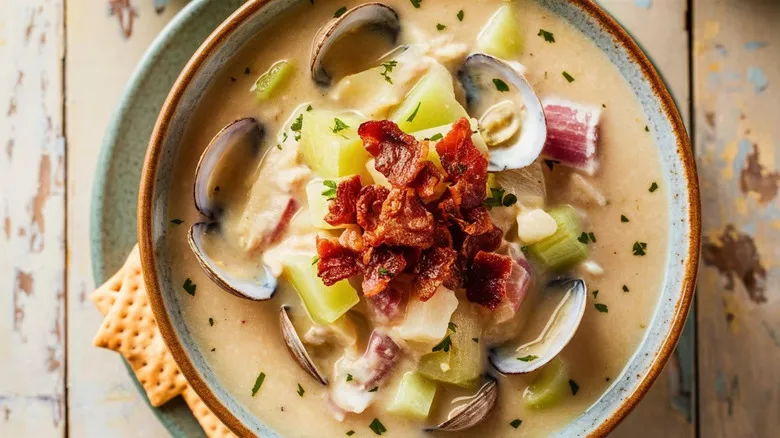
One of the classic ingredients in New England clam chowder is bacon, which imparts a wonderfully salty and savory flavor, along with a varying texture depending on how it’s prepared. For maximum crunch, ensure your bacon is cooked until extra crispy. If you prefer a milder texture, opt for a chewier bacon by cooking it at a lower temperature or for a shorter duration. You can enhance the chowder with small bits of bacon, either mixed in or used as a garnish on top. The flavor and texture complement the creamy dish beautifully.
There are also alternative pork options that can be used to introduce different flavors. "At the Sea Crest Beach Resort, we replace bacon with a mild chorizo," says Brock Anderson. "This still provides that pork essence, but the chorizo spices add a layer of complexity to the soup."
Additionally, you can utilize bacon fat to sauté your vegetables in the initial stages, infusing the chowder base with flavor. This approach simplifies the cooking process, as you can start by frying the bacon in a Dutch oven and then use the same pot to prepare the chowder, minimizing the number of dishes and cleanup required.
Experiment with additional flavors
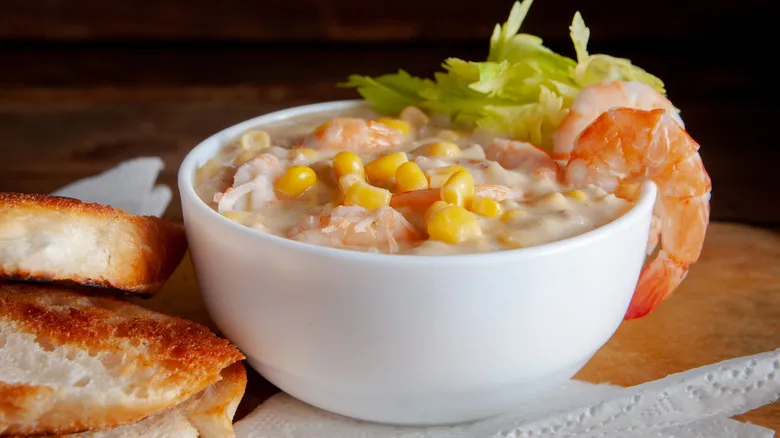
There are days when you might find yourself longing for classic New England clam chowder, but don’t hesitate to mix things up every now and then. Brock Anderson is well-versed in blending new ingredients and flavors into the clam chowder at the Sea Crest Beach Resort. You can experiment with similar techniques in your own kitchen by using different vegetables and broths that complement clams. You might even consider adding other seafood, such as mussels and shrimp, to create a delightful seafood chowder.
Incorporating beer can introduce a "malty flavor" to the broth, providing an alternative twist. If you decide to add more liquids, you may need to increase the amount of roux or potatoes to maintain a thick and creamy consistency. Don’t hesitate to adjust and taste as you go until you achieve the perfect balance.
You can also experiment with various vegetables. Corn is a favored choice because its sweetness pairs beautifully with creamy chowders. Some chefs even make corn chowder on its own without clams, so combining these two creamy soup variations is truly a match made in heaven.
There are also substitutions you can make to alter the dish's nutritional profile. "Sometimes, I’ve been asked to create a low-carb version, so I use turnips instead of potatoes," says Anderson. Turnips have a similar starchy quality when cooked but contain fewer carbs than potatoes.
Add the clams last

If you've previously made clam chowder and found it lacking, the likely culprit could be overcooked clams. Thankfully, this is a simple issue to resolve without needing to monitor, stir, or adjust any ingredients. The key is to wait until the chowder is fully prepared before adding the clams.
Although New England clam chowder is named after the shellfish, the clams should actually be added at the end of the cooking process. Whether using steamed or canned clams, they are the final ingredient to incorporate into the chowder. Brock Anderson suggests allowing the chowder to simmer for about 20 minutes after adding the cream and potatoes.
Before adding the clams, ensure they are cut into bite-sized pieces, either by chopping them yourself or purchasing canned chopped clams. This is best done while the chowder simmers and the potatoes cook. If you need to thicken the soup with a roux or by mashing some potatoes, do this before you’re ready to add the clams.
"Adding the clams in the final minutes of cooking is a surefire way to impress your dinner guests during the winter months or year-round if you're on Cape Cod," says Anderson. If you add the clams too early, they will continue to cook in the broth, resulting in rubbery pieces that are difficult to chew.
Wait until serving to add oyster crackers
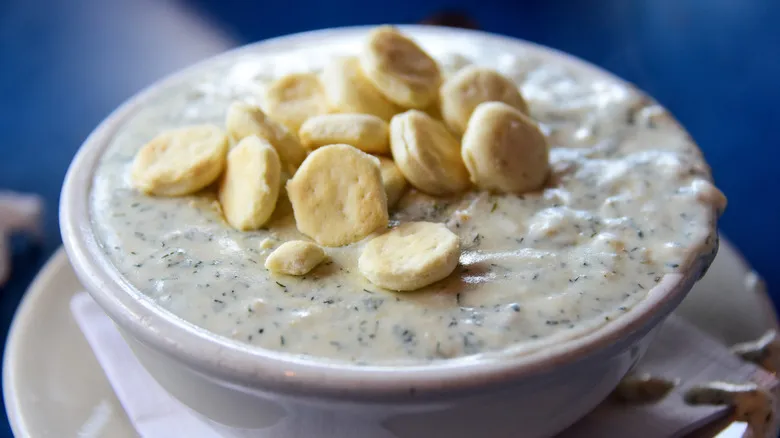
Due to its rich creaminess, New England clam chowder benefits from added texture. While garnishes like crispy bacon can enhance the dish, something to absorb the delightful flavors is often ideal.
"We at W.H. Stiles Fish Camp are traditionalists," says Anne Quatrano. "Naturally, we serve it with oyster crackers." These crackers can provide a satisfying crunch, but it's best to add them only after the dish is fully cooked and plated. You might choose to place them on the side of your plate, waiting until you're ready to take your first spoonful to sprinkle them on top. Adding them too soon will lead to soggy oyster crackers that sink to the bottom of your bowl.
Oyster crackers are small, round crackers with scalloped edges, commonly paired with seafood-based stews and soups, including New England clam chowder. They have a mild flavor on their own but are excellent for enhancing the chowder as they absorb its deliciousness.
Most restaurants provide small packets of oyster crackers with clam chowder. If you're making it at home, you can purchase a larger bag and use as many of these charming little crackers as you like. Paying attention to these small details can elevate your dining experience to rival even the finest seafood restaurants in New England.
Recommended

5 Ways You Aren't Using Chopsticks But Should Be

Spatchcocking Is The Chicken Prep Trick You Need For Crispy Skin
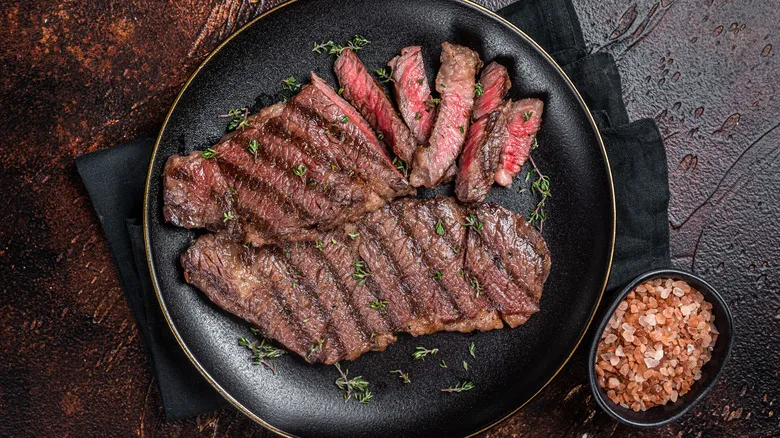
If You Don't Have A Meat Thermometer, Reach For This Cake Tool To Test Steak Doneness
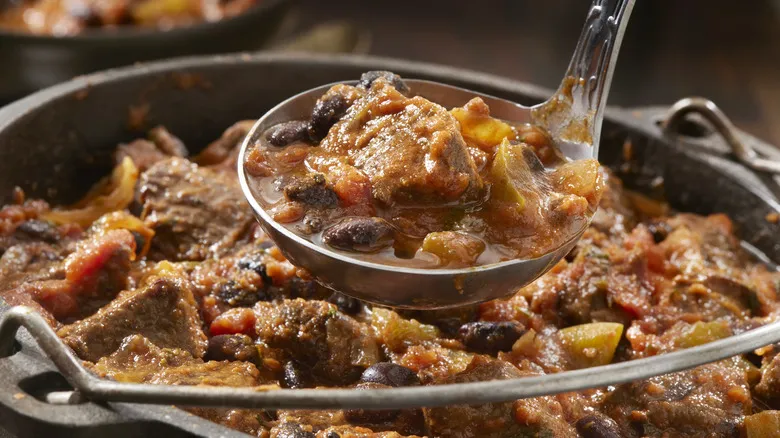
Totally Elevate Your Chili With One Meat Swap
Next up

